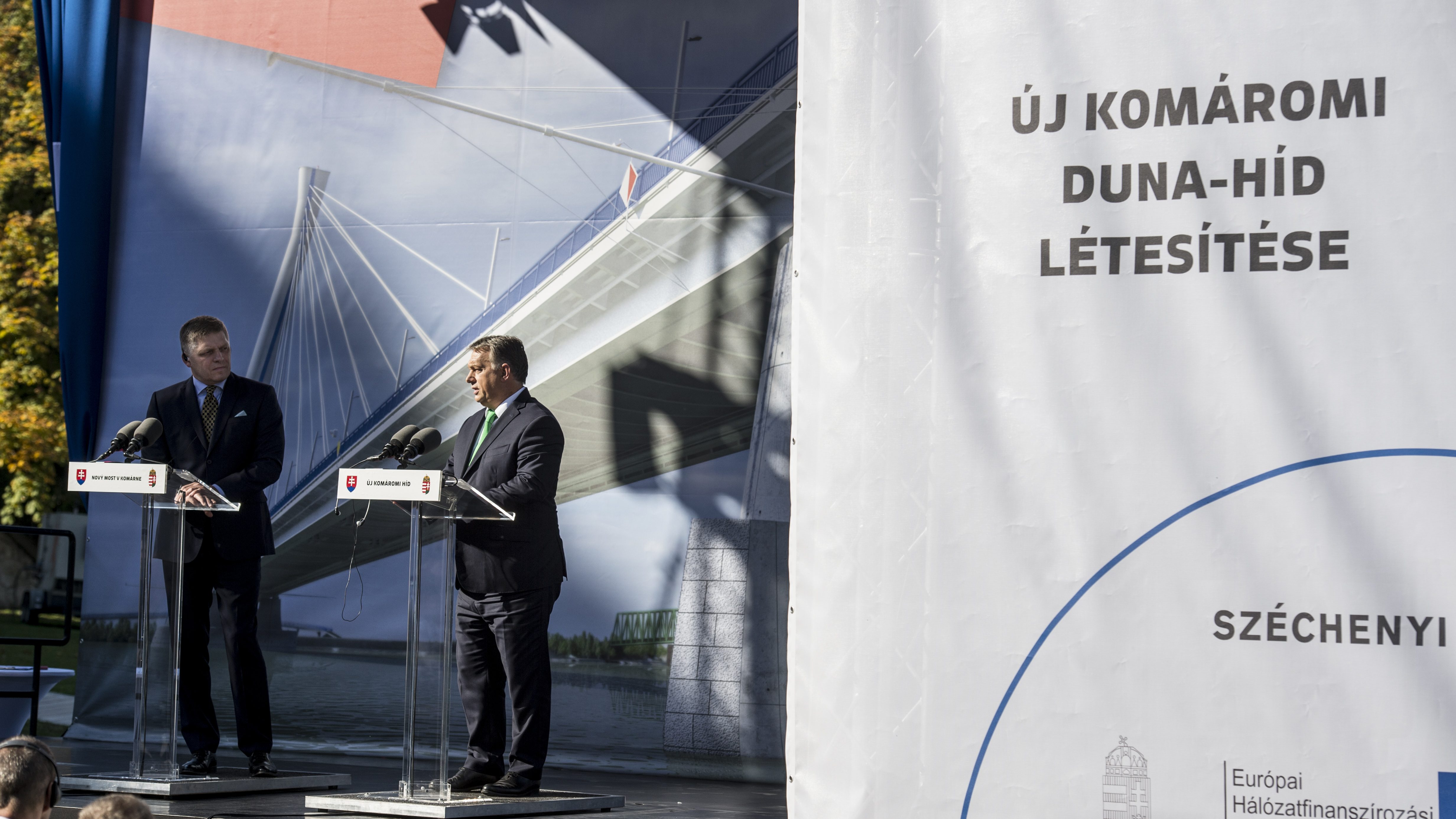
On Tuesday, at the official foundation stone ceremony for a new bridge over the Danube at Komárom (Komárno), Prime Minister Viktor Orbán said: “Let this new Danube bridge at Komárom be a symbol of the fact that we are protecting Europe’s external borders and enabling the internal borders to remain open”.
“The construction of this bridge is proof that the Hungarians and Slovakians believe in a Europe that is open and freely accessible to European citizens”, he added.
“Visegrád Group [V4] cooperation is based on strong foundations, because the countries of Central Europe have leaders who think not only of their own countries, but also in terms of Central Europe”, he declared.
The Prime Minister said that “It is our firm belief that those who think and act in terms of Central Europe are doing something good for all four countries of the V4, and are also doing something good for all of Europe”. He added that “It is also thanks to this that Slovakia and Hungary have recently found common ground, both in politics and the economy”.

Mr. Orbán declared that the two nations can be even more successful if they establish further links along their borders. “The greatest beneficiaries of this will be settlements along the two countries’ borders and the people who live there”, he pointed out.
The Prime Minister observed that over the past three years six new links have been established between Slovakia and Hungary, and that the inauguration of the freight ferry means that the average distance between border crossing points has been reduced to ten kilometres. He noted, however, that this is still far less than the distance of 2–4 kilometres that is characteristic of Western Europe, so “we have a lot of work to do in future”. Mr. Orbán thanked Slovakian prime minister Robert Fico for the joint work the two countries have completed in recent years.
The tender for the construction of the new bridge was won by the H-M DUNAHÍD consortium, the members of which are Hídépítő Zrt. and Mészáros and Mészáros Kft. The net construction cost is 91.2 million euros, and the new bridge and its new approach road sections are expected to be opened in autumn 2019.
Once the new road bridge is completed, freight traffic will be able to reach the Slovakian border via the M1 motorway without having to enter any settlements, meaning that noise and air pollution in neighbouring towns and villages will be significantly reduced, and crossing the border will become faster and safer.

The 600-metre bridge will accommodate one lane of traffic in each direction, and pedestrian and cycle lanes. In addition to street lights, the bridge’s unique structure, pylon and cables will also be illuminated at night.
The bridge structure will be cable-stayed, with a single pylon and an orthotropic steel deck. The lower structure of the bridge will have five spans, three of which will be over the river, and the remaining two on the floodplain on the Slovakian side. The pylon will rise to 94.5 metres above road level.
Hungary is the project coordinator, and the project will be commissioned by Hungary’s Ministry of National Development and Slovakia’s Ministry of Regional Development. It will be implemented by NIF Zrt. and the Slovakian public road management company Slovenska Správa Ciest (SSC), with funding from the EU, Slovakia and Hungary.
The road links on the two sides of the bridge will be realised in two separate projects, with the planned Route 131 linked to Komárom’s southern bypass on the Hungarian side. This stretch of road will include two roundabouts and a small overpass. The public procurement tenders for the construction of these is in progress, and if successful the results are expected to be published next June.

According to information previously provided by NIS Zrt., the new bridge over the Danube will be built 170 metres west of the existing railway bridge. The closest unhindered border crossing points for heavy goods vehicles travelling between Hungary and Slovakia currently need to make a detour of 53 kilometres via Vámosszabadi, or 180 kilometres via Parassapuszta.
The new bridge will be Slovakia’s second longest bridge after the Apollo Bridge in the capital, Bratislava.
